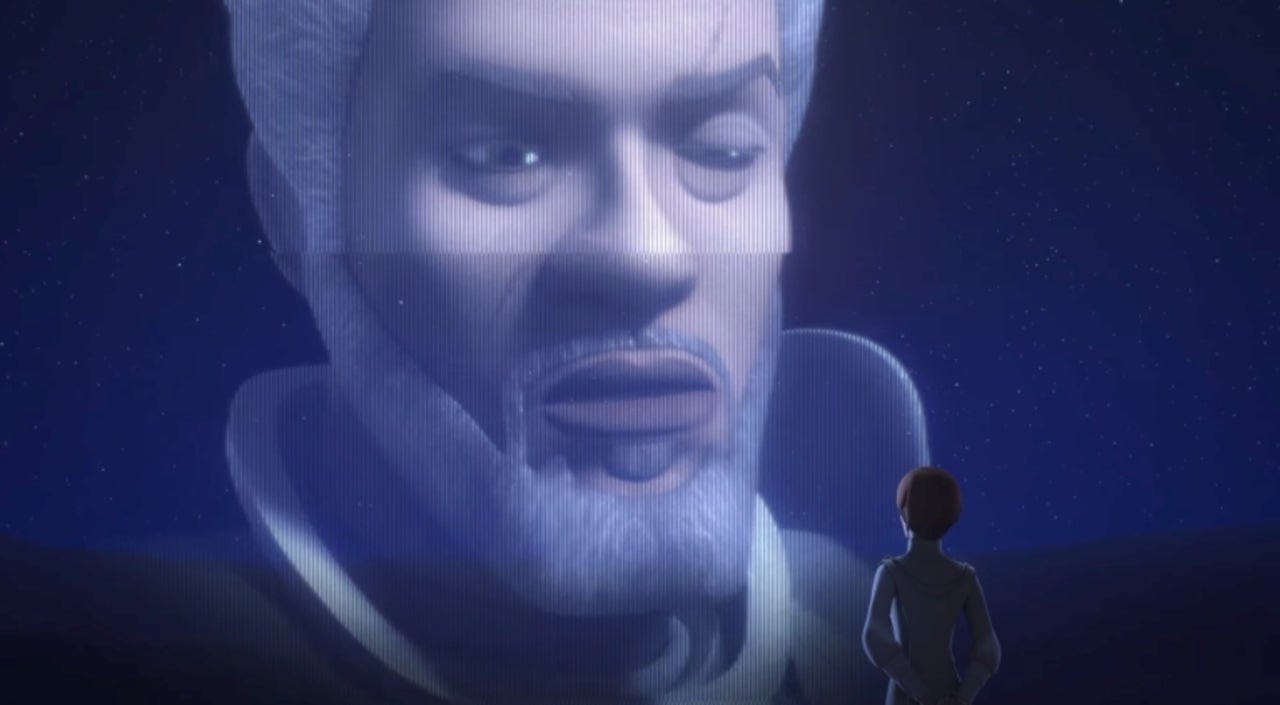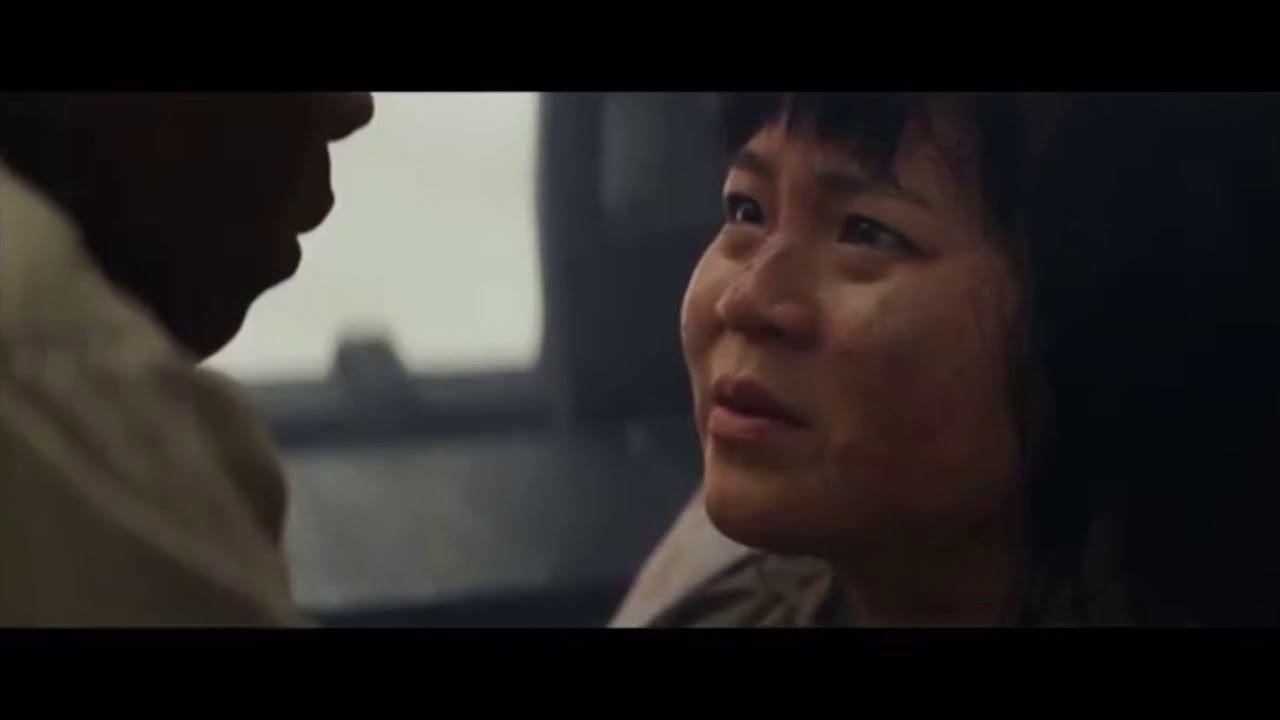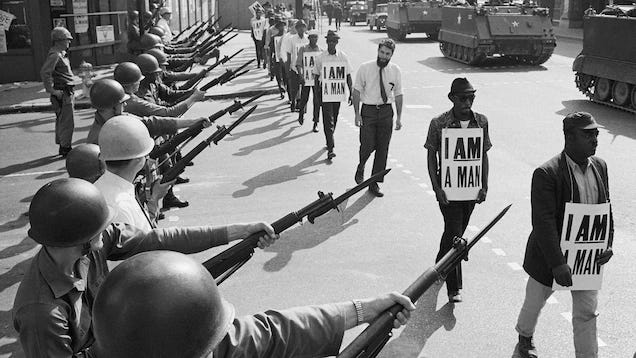Star Wars wants you to FIGHT THE POWER
But HOW you fight still matters in IRL and in a galaxy, far far away
May The Fourth Be With You my friends!
Essay up top & video monologue down below.
You can say that Star Wars isn’t political. When families sit down together for movie night and partake in what is essentially a generational ritual of sorts, that is watching Star Wars movies, it’s fair to say that shaping the political opinions of little ones isn’t likely priority number one. And Star Wars wouldn’t be a very clear medium for such an undertaking. So you could say Star Wars isn’t political, but you’d still be wrong.
Just last week my 10-year-old daughter was in the car with me on an errand and she asked me, “Dad, is there a Star Wars character you really don’t like?” I try not to show my hand on the things I dislike in Star Wars, it has a way of tainting your padawan’s confidence in their own opinions. So I kicked the question back to her. She said, “Well, Mon Mothma and Saw Gerrera both drive me nuts with their arguing. The Empire is evil. They should be able to work together on fighting it.”
In the words of Master Yoda, "Truly wonderful, the mind of a child is." Her Star Wars take just subtweeted the entire nation and Star Wars fandom in three short sentences. If you’re not familiar with these characters, Mon Mothma is the leader of the Rebel Alliance. Donning white robes and a red pixie haircut, Mothma was first introduced to fans in Return of the Jedi (1983) during a more simple time for Star Wars lore surrounding the fight against the Empire. Back then, you would have thought participation in the Alliance was a given. Then came Rogue One (2016), the first-ever standalone film from the franchise now under the banner of Disney. Released just weeks after the election of Donald Trump, it was a movie truly made for its moment and it landed perhaps more raw than even its makers intended.
A new rebel leader named Saw Gerrera, portrayed by Forest Whitaker, was introduced to the story and with him a debate over tactics and principles in the fight against the Empire. Deep fans can get more Mon Mothma versus Saw Gerrera action in the animated series, Star Wars Rebels, but the Rogue One gave us that first glimpse of a Rebellion that was anything but united in the fight against the fascistic regime presented to us in the Galactic Empire. Turns out, even in a galaxy far, far away you can tune in for a clash over how to #RESIST and what to build when the fight is won. If it sounds familiar, that’s because the parallels with our own world were too obvious to look away once seen. Mon Mothma’s establishmentarian politics juxtaposed against a more urgent and radical brand of revolution being offered by Gerrera, looked an awful lot like the showdown between Hillary Clinton and Bernie Sanders just months before. In the years since then, the explosion of populism within the Republican and Democratic parties have proven to be anything but a momentary trend.
It’s easy to say no to things, to wave your first at Trumpist Republicans, Antifa, capitalists or socialists. But it’s a lot harder to share the vision of what you’re building. I’ll show my hand here and say that I think my daughter was wrong to lay disagreement and unreasonableness at the feet of Mon Mothma, the somewhat neoliberal, insider Rebel leader. Mothma’s success against the Empire is a matter of fact, her message of hope and a brighter future was transparently victorious. Saw Gerrera however, represented the indignation, rage, and nihilism that made the fight against the Empire harder to win.
Gerrera viewed the fight as a fight against the system itself, more so than just one regime. After all, the Republic became the Empire. It was anything but ideal. As such, he embraced unvarnished political violence as a tactic, not hesitating to kill innocents and terrorize civilians in the name of undermining Imperial rule.
Mothma knew what so many resistance leaders (MLK, Nelson Mandela, Gandhi, even Joshua Wong) in our own world have known about taking on tyrannical regimes, which is that more often than not, otherwise good people have opted to do nothing because they see no other way. The goal of a leader that unites broader coalitions is to show the way, paint a picture of a brighter future and give hope that it can be realized. Revolutionaries like Gerrera, well, they just want to score points and burn things.
Star Wars introduced this fracture into the Rebel Alliance for a reason. It was to reflect on how we choose to fight against forces of darkness, not just why. In The Last Jedi (2017), Resistance fighter Rose Tico says to ex-Stormtrooper turned freedom fighter, Finn, “That’s how we’re gonna win. Not by fighting what we hate. Saving what we love.” Nicely put. But is Tico saying it’s wrong to fight? No.
When she says this Rose is lying amidst a pile of rubble on the battlefield, after nearly giving her life to save Finn from the First Order’s gigantic mechanical walkers. This isn’t just cheesy romanticism at play here, it’s real wisdom.
There’s fascinating research on the subject of how we should think about tactics when fighting against power. Erica Chenoweth and Maria J. Stephan authored through Columbia University, “Why Civil Resistance Works: The Strategic Logic of Nonviolent Conflict,” which compiled data on mass movements from 1900-2006, and the ingredients of movements that produced regime change, democratic reforms, and stability afterward.
Non-violent tactics worked better. Boycotts, protests, strikes, go-slows, economic and social non-cooperation and doing so without bringing physical harm to bystanders or communities. Now let’s be clear. The Rebel Alliance was not a “nonviolent” movement on either side of it. It was an orchestrated military alliance that sought to build a coalition of the willing in hopes of massing large enough fleet to do open battle with the Empire. Mon Mothma launched all manner of limited strikes against the Empire, mostly through covert action such as stealing military hardware and broadcasting to the galaxy about the evils being perpetrated by Emperor Palpatine. Violence was on the menu, but it wasn’t the main feature of her movement.
There’s an old quote from Frederick Douglass that goes, “The limits of tyrants are prescribed by the endurance of those whom they oppress.” This is timeless. Palpatine was brought into power by thunderous applause and a sort of tacit consent from the people of the galaxy to do what had to be done to restore order and prosperity. Mon Mothma focused her energy on eroding the perception of that consent to Imperial rule by making it known there was neither order nor prosperity, and she limited the Rebellion’s use of violence. The Empire’s indiscriminate use of violence served only to delegitimize itself. This kind of restraint on the part of the Rebellion is what expands the size and appeal of social movements. They also make them more diverse.
Saw Gerrera’s movement, The Partisans, was incredibly destructive but small in number.
Hope isn’t weakness. Lighting fires isn’t strength. Organizers, activists, politicians, and community leaders within democratic societies have to take on the challenge of expanding support for their causes. This can only be done credibly through consent, not force. Achieving this necessitates grappling with the facts on what motivates people to stand up in the first place, and a message of anger, despair, and nihilism doesn’t have a strong track record.
Hope, however — it does. Rebellions are built on hope.
Stephen Kent is the host of Right Now with Stephen Kent from Al Jazeera's Rightly channel, as well as the author of the forthcoming book from Hachette’s Center Street, “How The Force Can Fix The World: Lessons on Life, Liberty and Happiness from a Galaxy Far, Far Away.” Follow him on Twitter @Stephen_Kent89






